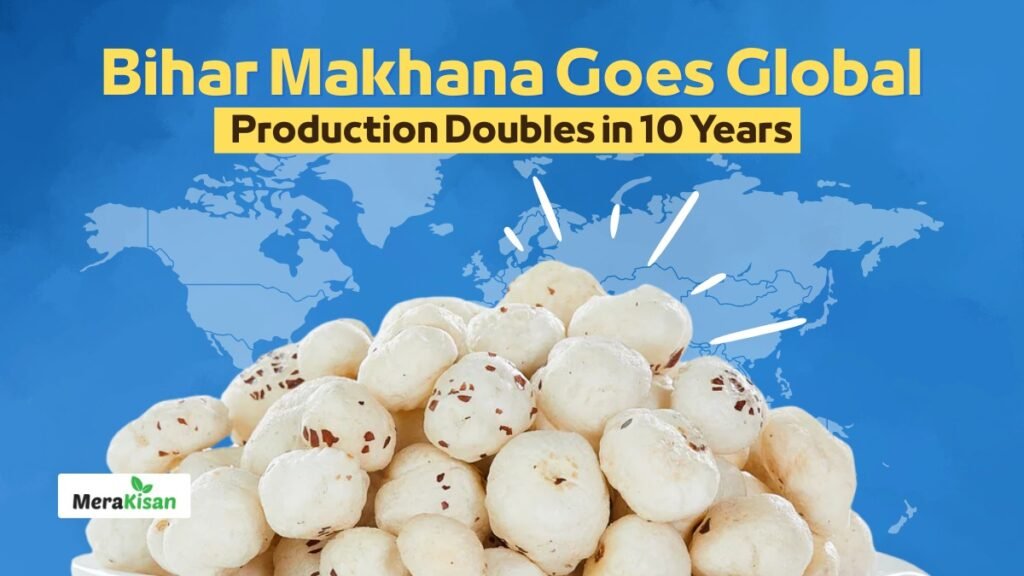After producing Makhanas for over a decade, Bihar has finally made it to the American Market. This achievement is the result of consistent efforts by the Bihar Government, particularly through the Horticulture Directorate and the Agriculture Department. (BHDS)
Mithila Makhana, known for its quality and taste, now carries a Geographical Indication (GI) tag, giving it a unique identity and a place in international markets is the main reason for this growth in Bihar.
Makhana Production in Bihar
Over the past decade, Makhana production in Bihar has doubled, with farmers adopting better techniques and newer varieties. This has resulted in the revenue growth increasing 4.57 times, bringing more income and recognition to rural farmers in the region.
Well, we should not forget that behind this growth is the Makhana Vikas Yojana, launched in 2019–20, along with major support from the Makhana Research Center Darbhanga (ICAR) and Sabour Agricultural College.
High-yielding seed variety of Makhana
At the heart of this initiative are two high-yielding varieties—Swarn Vaidehi, developed by the Makhana Research Center in Darbhanga, and Sabour Makhana-1, introduced by Bhola Paswan Shastri Agricultural College.
These varieties have been promoted through on-ground demonstrations, allowing farmers to see the benefits firsthand. The result? Better quality seeds, higher productivity, and growing confidence among local cultivators.
The use of high-yielding seeds and proper training has significantly boosted productivity and quality, making Indian makhana fit for global shelves.
Top 10 Makhana-producing Districts in Bihar
Today, Makhana is being cultivated in 10 major districts of Bihar—Darbhanga, Madhubani, Katihar, Araria, Purnia, Kishanganj, Supaul, Madhepura, Saharsa, and Khagaria. The area under cultivation has expanded to over 35,000 hectares, engaging around 25,000 farmers in the value chain. This shift isn’t just about quantity.
The government pushes for Makhana
The state government has supported farmers through grants, storage facilities, and marketing efforts. Events like the Makhana Mahotsav have helped build awareness, while logistical aid has made exports smoother.
Thanks to these combined efforts, makhana from Bihar recently reached America, marking a proud milestone for farmers and the state alike.
Conclusion
This is just the beginning of the story for Makhana in India. Makhana isn’t just seen as a source of snacks in India but a way to foray into the global market, it is now considered a black diamond for India.
Read More: Makhana in India: Cultivation, Nutrition & Global Demand

